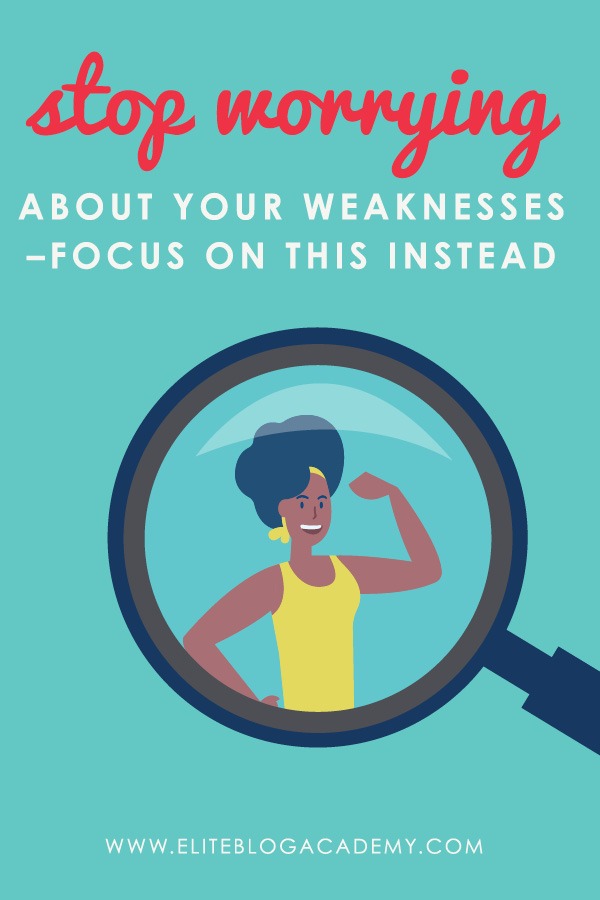Conquer Your Fear of SEO

SEO is often a pretty big topic of discussion for bloggers. In fact, one of the most frequent questions I hear from our students at Elite Blog Academy is “What about SEO? Where is it on your priority list?”
My answer is always this: SEO is definitely something my team and I pay attention to. It’s an ongoing task, making sure that every post is fully optimized, and after 9 years of blogging, it is something I tend to do out of habit. That said, it’s not something I spend a ton of time on.
Now, don’t misunderstand me — SEO is important. And it’s also important every blogger has at least a basic understanding of what it is, how it works, and how to optimize your posts. But it’s not something for which you need to take time away from the rest of your life and on which you have to spend the next month learning and focusing (phew!).

Are you ready for one sentence to change your business?
Using the right hook can do just that!
The truth is, an Instagram reel won’t change your business, at least not all on its own. But if you’re using the power of Instagram to drive leads into your business, using the right hook is vital for your success. Grab the exact hooks that have gone viral for my @ruthsoukup Instagram account again and again (and got me over 30 MILLION views and tens of thousands of new followers).
And the best part? It’s completely free! Just fill in your information below so I know where to send it.
I promise, it’s not as hard as you think, and you don’t need to be a pro to get your posts ranked in the SERPs (Search Engine Results Pages). It’s simply about following a few basic rules and optimizing your posts the right way.
And that “following the rules” part is super important! When it comes to SEO, there are no shortcuts: Google knows what they’re doing, and if you try to trick them, trust me — they’ll catch it so fast it’ll make your head spin.
Really, Google’s job is to help people find amazing content. SEO helps Google understand what each page of your site is about so they can help the right people find YOUR amazing content.
Now, just so you know: this won’t happen overnight. When you focus on SEO, you are playing the long game, knowing that over time, all those good SEO practices will pay off. But if you apply the right techniques consistently over time, you’ll start seeing yourself move up in the Google rankings — and more and more readers will come your way.
So what SEO strategies should you focus on?
Here are 10 simple tips for conquering your fear of SEO so you can focus on what’s important — your content — and make the SEO stuff just another part of your routine:
1. Create Content That Connects
The most important SEO strategy you can implement is to create high-quality content that connects with the people reading it. Remember, it’s Google’s job to deliver the best content to all the Googlers out there. So your goal is to show Google that your content is the absolute best possible result for whatever the search happens to be.
No matter how many SEO tricks you have up your sleeve, if you’re not creating amazing content, you won’t get amazing SEO results. Starting with great content is key.
2. Get Focused (On One Topic, That Is)
Structure is also really important when it comes to SEO. If you try to fit too many different themes and ideas into one post, Google is going to get confused on what your post is actually about.
So instead of trying to write about four different themes in one post, take each of those themes and write four different posts. That will make your content more focused and easier to understand from an SEO perspective.
You can build off that central theme with subheadings and bullet points, but make sure your central theme is clear in every post you write. Use keywords in your subheadings to reinforce what your post is about and make it easier for Google to understand.
3. Choose Keywords Wisely
Choosing the right keywords to feature in your post will also help with your SEO.
Personally, I don’t research keywords. Instead, I choose long-tail keywords that line up with whatever I’m writing about. So, for example, instead of using “cupcake” as my keyword, I would use “how to bake a chocolate cupcake”.
It’s a better strategy to optimize for long-tail keywords. Long-tail keywords are more specific, so you’ll get more targeted traffic and more readers looking for exactly what you’re writing about.
So how do you choose the right long-tail keywords?
The best method is to put yourself in your reader’s shoes. Ask yourself, “If I were searching for this kind of content, what would I type into Google to find it?”
So, for example, let’s say you write an article called “How to Lose 15 Pounds by Next Week.” If you were looking for a plan to help you drop that kind of weight in the next seven days, what would you search for? Probably something like “how to lose 15 lbs by next week” or “how to lose 15 lbs in 7 days”. So those would be the long-tail keywords you’d want to include in your post.
Remember: Google’s job is to find people the best possible content for their search, so the more specific and tailored you can be with your keywords, the better.
Now, a quick word of caution: when it comes to keywords, don’t go crazy and try to include your keywords in every other sentence. That’s called “keyword stuffing”, which can actually hurt your SEO rather than help. Pepper your keywords throughout your post in a natural way.
4. Use Your Meta Data To Your Advantage
A meta description is that little blurb you see underneath a search result when you Google something. It’s basically a sneak preview of what your reader can expect when they click on your post, and it’s super important to drive traffic to your post.
The perfect meta description is something that will capture your reader’s attention. Because even if you’re second, third, or fourth on the page, if you have the most compelling description — one that really hooks your reader — yours is the link they’re going to click on.
You also want to include your long-tail keyword phrase; not only will it give you a little extra SEO juice, it’ll also remind your reader that your post will give them exactly what they’re looking for.
Overwhelmed by all the extra things you have to do in addition to writing your blog post? The good news is that we’ve built a quick checklist that covers everything you need to do when it comes to SEO and promotion, and it will seriously pay off in the long run! Get your free checklist now while supplies last!
5. Update Your URL Slug
You’ll also want to update your URL slug to highlight your keyword phrase. Your URL slug is the location of a specific post on your blog (or what comes after www.yourblog.com). Most of the time, your URL slug will automatically default to the title of the post, but you’ll want to cut that down and just focus on your keyword phrase.
So, for example, if you wrote a post titled “How to Focus on What Matters Most When You Start Blogging” (which I just did!), you’d want to shorten that URL slug to “how-to-focus-blogging.”
PRO TIP: If you already have a published post, do NOT go back and update the URL! This may actually do more harm than good.
6. Get Your Link On
Internal linking is also a great way to boost your SEO. Look for opportunities in your post to link to other, relevant posts you’ve written.
The key here is not to overdo it. Only include a link where it naturally works, and don’t try to link every other word. If your post is stuffed with a link every five letters, not only does it hurt SEO, but your readers might get overwhelmed.
A good rule of thumb is two to three links per post. And make sure you’re linking your keywords! Linking those keywords is what’s going to help you build up your SEO over time; you’re not going to see any SEO benefit if you link generic words like “click here” instead of your long-tail keywords.
7. Get Your Links Fixed
In the eyes of Google, broken links are a big no-no, and having them in your posts can really drag down your SEO.
Broken Link Checker is a Chrome extension that will check your entire page for broken links and let you know where they are so you can update and fix them. It’s super easy and WAY faster than going through every last post looking for broken links yourself.
8. Don’t Forget About Mobile
User experience is a huge factor in how your post will rate on Google. Today, more and more people are using their phones for searches, and as a result, Google is only providing results for pages that are mobile friendly.
Make sure that your site is optimized for mobile phones and tablets, and that it provides a great user experience for your readers, no matter where they’re viewing your site.
9. Optimize Your Images
Whenever you use images, it’s really important you optimize them with an alt tag and with a great image description. Not only will this help you on Google, but it will also optimize your posts for Pinterest, which is basically a visual search engine.
10. Get Your Title Tags Right
You’ll also want to optimize your title tags, i.e. the text that appears in the top bar of the browser when people read your post. Include your keyword here to help boost the SEO of the post.
So that’s SEO in a nutshell! If you only take two things from this list and started implementing on your blog, they should be to:
- Make sure your post has super awesome, high-quality content.
- Make sure your keyword is in your blog post title, your title tag, and your meta description. And while you’re at it, make sure your meta description is compelling and hooks your reader’s attention.
That’s it! If you do those two things, you’ll be well on your way to getting the most out of your SEO, and you can work on implementing all the other tips as you go along.
Do you have any SEO tips you’d like to share? Leave your favorite in the comments below!
Overwhelmed by all the extra things you have to do in addition to writing your blog post? The good news is that we’ve built a quick checklist that covers everything you need to do when it comes to SEO and promotion, and it will seriously pay off in the long run! Get your free checklist now while supplies last!








Hello, Your Ted talk was Amazing! I myself when I was 18 spent I believe 3 months in the hospital for depression, I was afraid of everything back then, and just was out of High school. Thank God we learn how to deal with it. Thank You for everything, Carrie Hayes
Thanks for all the tips! Definitely needed them! I just added Yoast as one of my plug ins so hopefully that will help as well!